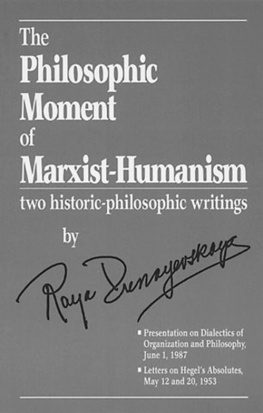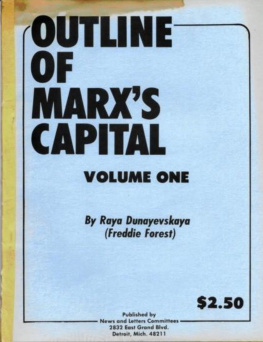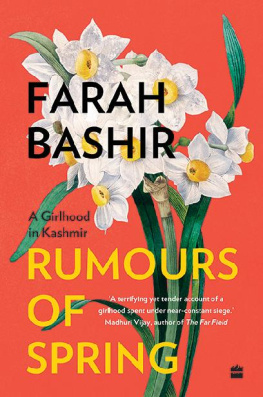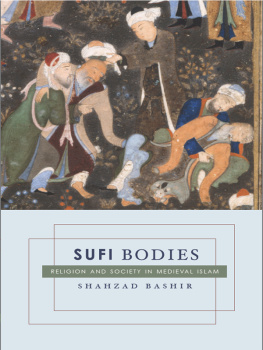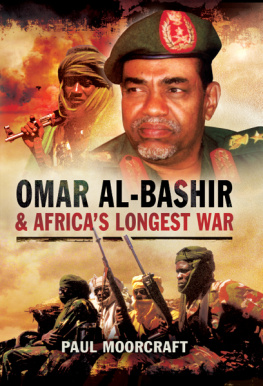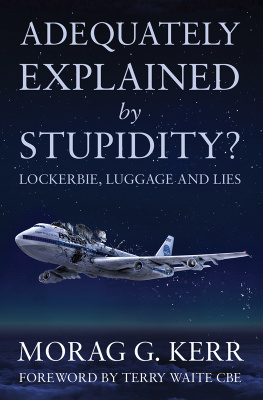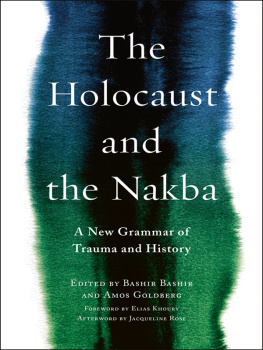ACKNOWLEDGMENTS
This book completes a journey into the heart of cinema trauma. The journey began with my prior research that delved into two post-traumatic cinematic cultures German and American which to a great extent defined my twentieth-century Jewish-Israeli identity. The first decade of the twenty-first century and its consequent transformation of the rules of war inevitably led me to deal with my own post-traumatic culture. Being an Israeli on the Left in the era of ongoing Israeli occupation of the Territories, and personally facing Palestinian suicide attacks, makes my subject position complex, yet clear. Providing a thorough interpretation of the unbearable realities of both victims and perpetrators became, by and through the writing of this book, an identity challenge that went beyond my scholarly aims.
My heartfelt thanks to all the people who helped me during the writing of this book. To Prof. Avner de Shalit, the Dean of the Faculty of Social Sciences at the Hebrew University Jerusalem for his extraordinary humanity, support, and willingness to provide assistance in any way. Likewise to the head of the Communication and Journalism Department, Prof. Menahem Blondheim, for his illuminating and wise suggestions, his full support, and for the invariably interesting discussions. To Prof. Tamar Liebes and especially Prof. Ifat Maoz for their continuous help and strong support. To my colleagues in the Communication and Journalism Department, especially Prof. Elihu Katz, Prof. Etti Shelly-Newman, and Dr. Zohar Kampf. A special thanks also goes to Prof. Nurith Gertz and Prof. Mihal Friedman for their invaluable assistance at every stage.
My gratitude to Prof. Brian Winston for cheerfully volunteering his assistance throughout; as well as Prof. Daniel Dayan, Prof Bill Nichols, Prof. Michael Renov, and Prof. Philip Rosen. Thanks to Prof. Linda Williams for her generosity and warm assistance. I owe a special debt of gratitude to Prof. Janet Walker for her invaluable help and the many hours we spent in inspiring conversations.
Thanks to Prof. Yeshayahu Nir for our deep friendship throughout the years, his unstinting support and help, always with a touch of humor.
For help in obtaining the films, I am grateful to the Rabinovich Foundation for the Arts/ Cinema Project and its General Manager Giora Einy, to Yoav Abramovich and Ronit Kenan. Thanks to the Israeli Documentary Filmmakers Forum, the Jerusalem Cinematheque, The Israel Film Fund and its Executive Director Katriel Schory. Thank you to directors Tawfik Abu-Wael, Idan Alterman, Vidi Bilu, Amit Drori, Dalia Hager, Ari Folman, Eytan Fox, Dov Gil-Har, Aron Goldfinger, Nurit Kedar, Yair Kedar, Amos Kollek, Yair Lev, Eliav Lilti, Avi Mograbi, David Ofek, Yael Perlov, Eran Riklis, and Tamar Yarom for their cooperation. Thanks to Gal Uchovsky, Micha Shagrir Tapuz Communications and the Moments Project, to Buzz Films, to Yehuda Biton Productions, to Arik Barnshtein Lama Production, Haim Mecklberg and Esti YaakovMecklberg 2team Productions, and Transfax Productions.
Thanks to Helene Landau, my English editor, for the invaluable assistance she provided in bringing the book to press. Her unstinting devotion and uncompromising professionalism was felt every step of the way. Thanks to my student Avichay Sharon, a founder of Breaking the Silence, for his invaluable help, and my student Noa Alfia for her assistance. Thanks to Gal Yaniv from the multimedia center at the Hebrew University for always volunteering his help.
Many thanks to Maria Marsh, the I.B.Tauris Middle East editor, and to Liza Thompson, the I.B.Tauris Visual Culture series editor. Thanks to Hannah Wilks for meticulous language editing and preparing the index.
To my extended family and friends, thank you for your love and support. And my wonderful daughters Reout and Rotem. This book is dedicated with love and appreciation to my sister, Shiffi Shmueli. And in memory of my dear friends Bilha Ben-David and Gary Bornstein.
My thanks to the Faculty of Social Sciences at the Hebrew University for their generous support in funding this research; to the Levi Eshkol Institute for Social, Economic and Political Research in Israel at the Hebrew University; and the Smart Family Foundation Communications Institute at the Hebrew University for funding this research.
Shorter versions of appeared in Camera Obscura.
PREFACE
The Israeli-Palestinian conflict, unfolding since the beginning of Zionist settlement in the area during the 1880s and lasting until this very day, is the longest running ethno-religious conflict in the modern era. It is a conflict that is constantly intensifying, escalating through the course of seven wars, two Intifadas,subvert traditional concepts. Waltzing with Bashir: Perpetrator Trauma and Cinema takes as its subject one major route of subversion the post-second Intifada new wave of films (and literature) that represent the trauma of the perpetrator.
The second Intifada period, which I chose to focus on because of the drastic change in the style of war it entails, posted a challenge for the Israeli documentary maker. The moral position Israelis assume vis--vis the Occupation and its representation, in particular of the ethnic-religious-national other, comes to bear on documentary film-making. Israeli documentary is a cinema of constant struggle: the reality in which it is created is imposed not only on its protagonists, but on its makers as well. Moreover, it struggles to express that which fictional cinema fails to deal with. As part of the struggle, the new wave of documentary films, as well as this book, strives to tackle a repressed set of conceptions. Both in trauma cinema research and in Israeli public discourse and narrative cinema the figure of the post-traumatic perpetrator is repressed. This book ventures to analyze the case of this pioneering wave of Israeli films (and literature) in order to mark trauma cinema researchs transition from the era of the witness to the era of the perpetrator.
Every period has its own imagines mortis (images of death), which in times of war and trauma, of course, have a special resonance. In 2008, Israeli filmmaker Ari Folman was one of the first documentarists to challenge local as well as world cinema audiences with his post-trauma as a war perpetrator. In his celebrated docu-animation Waltz with Bashir, Folman, who is the screenwriter and the director of the film, portrays an imaginary dance of death, or danse macabre.voiceover tells us, Israeli solider Shmuel Frenkel leaves the soldiers inadequate hiding place on the street, grabs a MAG machine gun, and amid heavy enemy fire enters the junction. Instead of crossing to the other side, Frenkel stays in the middle, shooting in all directions as if in a trance, dancing a waltz between the bullets to the sound of Chopins Waltz in C Sharp Minor.
His waltz embodies, of course, the phantasmatic element of mastery over death and winning the battle. Instead of the snipers luring the Israeli soldiers into the trap, the dance was meant to expose the snipers hiding place by focusing their fire on the dancer. Frenkels




